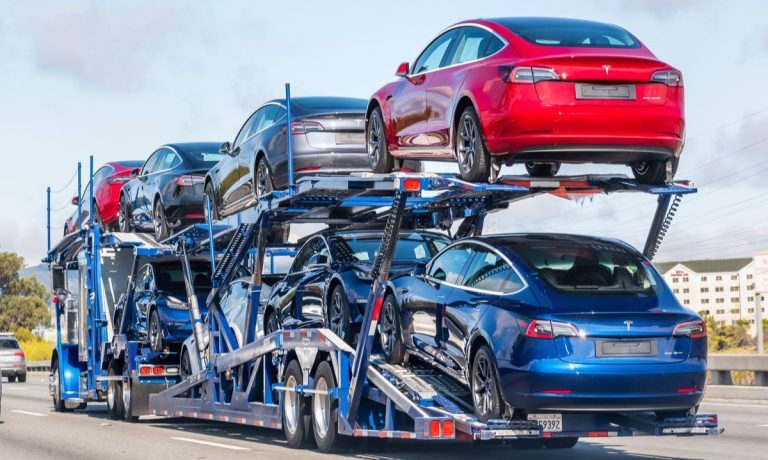
The vehicle transport business has had a lot of manual processes in everything from scheduling to invoicing to payments.
When car dealers hire transporters to move new and used cars from auction to dealer, from dealer to dealer or from dealer to consumer, it’s been done with phone calls, text messages, emails, paper invoices and checks.
Dave Sperau, founder and chief revenue officer at Autosled, saw the inefficiencies in this process during his time as a general manager at car dealerships. With 70 vehicles a month being purchased and transported, the paperwork became a full-time job.
“It became someone’s job just to track, process and pay the transporters for the vehicles we were buying,” Sperau said.
Creating a Better Experience for Dealers and Transporters
He also saw that because these vehicles were coming from different locations, there might be 55 checks a month being written to transporters. Also, at one point, the dealership had $25,000 worth of checks that had not yet been sent out because these busy transporters hadn’t gotten around to sending an invoice.
Sperau founded Autosled to transition these tasks to a digital platform, so that everything is in one place, payments are quicker and it’s easier for these small businesses to get paid.
“Ultimately, that’s why we’re here,” Sperau said. “We want to treat them better and we want to figure out how we can pay them instantly so they can get to the next spot or the next job. It will create a better experience for the dealer, too, because the drivers will be more loyal to the dealers.”
Operating 100% on an App
The Autosled solution has resonated with vehicle transport companies — today, two years after the company was founded, there are 4,800 transporters using the platform. Ninety-nine percent of these are mom-and-pop companies that have an average of two trucks and trailers, each capable of carrying three vehicles.
The company’s offering has attracted investors as well. On March 9, it announced that it had completed a $5 million Series A funding round.
With the Autosled platform, transporters accept a load on the app, do a bill of lading accompanied with pictures at pickup, do the same at the drop-off location and get the customer’s signature on the device. Payments are completed via automated clearing house (ACH).
“Once that’s closed, it triggers a two-day payment, direct ACH into their checking account,” Sperau said. “There’s no paper involved; it’s all 100% on the app and all 100% electronic.”
For dealers, the platform brings together in one place the information about the load, the bill of lading, the invoice and the payment. This can then be used by the accounting department to match up and reconcile the transaction.
“For a dealership, it streamlines the back-office part of it,” Sperau said. “We work with a really big dealer group that has 35 stores, and the person that was handling logistics has been repurposed to go into one of their internet departments.”
Boosting Efficiency with Artificial Intelligence
Autosled has digitized the scheduling of loads too. The app shows the pricing of available loads, the pickup and delivery addresses and the gate pass if one is needed. Transporters can accept the load on the app with no other communication required.
With the use of artificial intelligence (AI), the platform can suggest additional loads that are to be delivered in the same direction the transporter is heading so that they can fill more of the spots available on their trailer.
The goal is to help these transporters drive with full capacity. Citing statistics from the U.S. Department of Transportation, Sperau said the average truck hauling anything from cars to groceries to retail goods is 35% empty.
“What would it do to potentially reduce our prices and our efficiency if we could get these vehicles loaded?” Sperau said. “The ultimate goal is to help the drivers fill the capacity and suggest loads along the route.”
Meeting a Growing Demand for Transportation
To help dealers and end users see where their vehicle is, Autosled also offers a tracking mechanism. That’s especially important for planning deliveries to retail customers, because they often must meet the transporter somewhere away from their home where there is more room for the truck and trailer to unload the car.
“We can email or text them that link and they can watch it as it moves down the highway,” Sperau said.
Looking ahead, Sperau said the demand for vehicle transport is likely to continue to grow. It used to be that dealers would go to an auction and leave with a load of vehicles. Today, with many wholesale sales of vehicles being done online, a dealer might purchase 10 vehicles from 10 different locations. In addition, with online sales, more vehicles are being delivered to the consumer.
“It’s created more moves, a lot more logistics and a lot more locations that weren’t maybe served or maybe even visited much — picking up vehicles,” Sperau said.